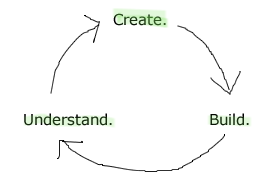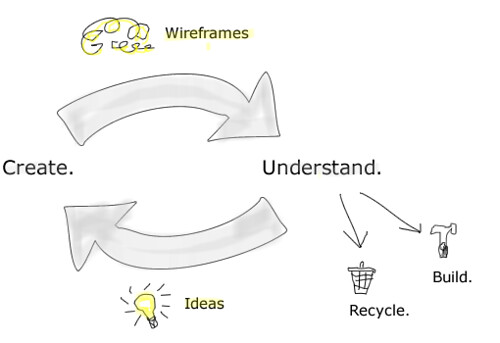A good service and user experience designer does two things: understands the needs that are related to a product or service, and creates solutions that fulfil these needs. The stages of creating and understanding are followed by each other.
Create. At the stage of creating, a product or service is outlined, bearing end user and business customer goals in mind. Concrete illustrations are produced. With the help of illustrations, end users and business customers are able to tell whether a solution meets their own needs and goals or not.
Understand. The stage of gaining understanding gives understanding of both the functionality of “wireframes” being evaluated, and the needs and goals of end users and customers. The use of concrete illustrations brings up questions that are relevant to user experience, and easy to ignore. The stage of gaining understanding also helps to discover completely new standards of activity, earlier not thought of, because it establishes dialogs between different points of view.
Build. The illustration above depicts the early stages of design, where implementation is not started yet. A team of authors should have good grasp of the structure of a product or service, and the interaction of end users with it, before implementation starts. Design details are refined while implementation goes on.
 Teemu Talja
Teemu Talja 


One thought on “A User-Centered Design process: first draft”